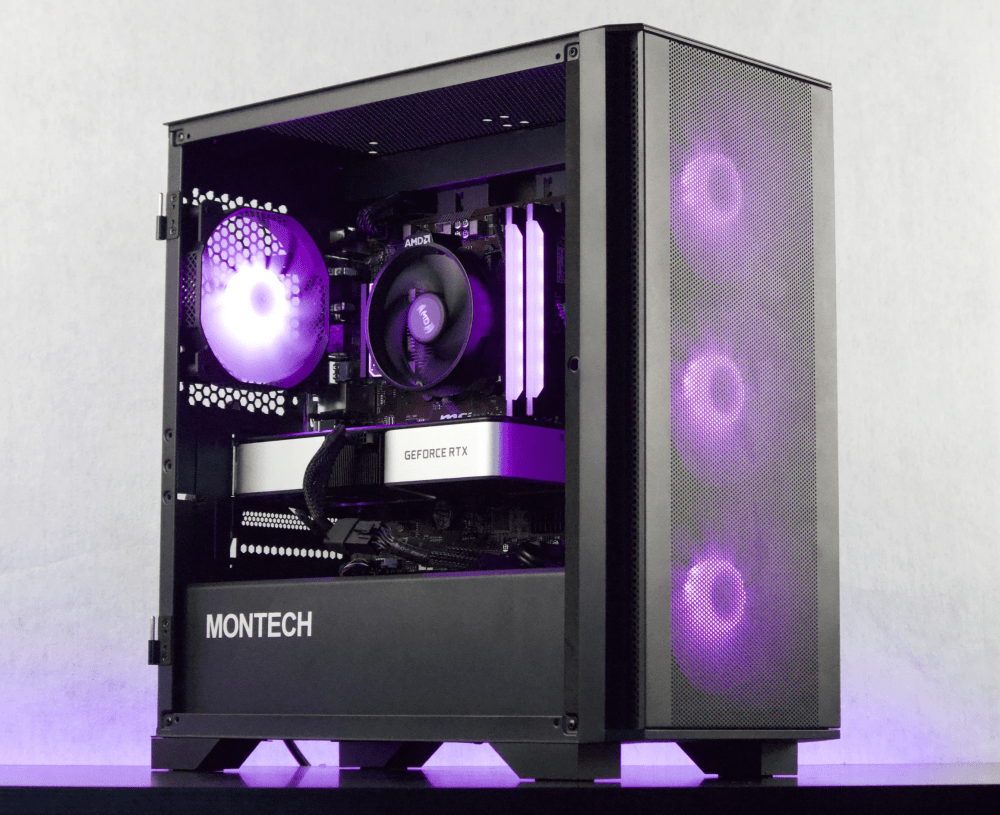Are you tired of your GPU overheating and causing performance issues? High GPU temperatures can not only affect the performance of your graphics card but also potentially damage it in the long run. If you're a gamer, a video editor, or someone who relies heavily on graphics-intensive tasks, it's essential to understand how to keep your GPU temperature at an optimal level.
In this blog post, we will explore various methods and techniques to reduce GPU temperature effectively. We'll cover everything from understanding the basics of why GPU temperatures matter to identifying high temperatures and their potential consequences. We'll also delve into both hardware and software solutions to combat overheating, as well as the importance of regular maintenance.
By the end of this blog post, you'll have a comprehensive understanding of how to keep your GPU temperature in check, allowing for smoother and more reliable performance. So, let's dive in and discover the secrets to reducing GPU temperature for better overall system health and longevity.
Understanding the Basics: Why GPU Temperatures Matter
A GPU, or Graphics Processing Unit, plays a crucial role in rendering graphics, running complex calculations, and driving the visual experience on your computer. It's no surprise that GPUs generate a significant amount of heat during operation. However, allowing your GPU to reach excessively high temperatures can have detrimental effects on both its performance and lifespan.
When a GPU operates at high temperatures, several issues can arise. Firstly, thermal throttling may occur, which is a built-in mechanism that reduces the GPU's clock speed to prevent overheating. As a result, your graphics card's performance may be significantly compromised, leading to lower frame rates in games or slower rendering times for video editing.
Furthermore, prolonged exposure to high temperatures can cause long-term damage to the GPU. Overheating can lead to the degradation of delicate electronic components, such as capacitors and resistors, which can result in system instability or even complete failure of the GPU.
To ensure optimal performance and longevity of your GPU, it's essential to understand and manage its temperature effectively. By maintaining a cooler operating temperature, you can maximize performance, minimize the risk of thermal throttling, and extend the lifespan of your graphics card.
In the next section, we will discuss how to identify high GPU temperatures and the potential consequences they can have on your system. Understanding these aspects will help you take proactive measures to keep your GPU running at safe and efficient temperatures.
Identifying High GPU Temperatures
Before you can take steps to reduce GPU temperature, it's crucial to determine whether your graphics card is indeed running at high temperatures. In this section, we will explore various methods to identify if your GPU is experiencing excessive heat.
How to Check Your GPU Temperature
There are several tools available that allow you to monitor the temperature of your GPU in real-time. Here are a few popular options:
-
GPU Monitoring Software: Many graphics card manufacturers provide their own monitoring software, such as MSI Afterburner, EVGA Precision X, or ASUS GPU Tweak. These tools allow you to monitor GPU temperature, fan speed, and other vital statistics.
-
Third-Party Software: There are also third-party applications like HWMonitor, GPU-Z, and SpeedFan that provide detailed information about your GPU, including temperature readings.
-
Built-in Operating System Tools: Some operating systems, such as Windows 10, have built-in performance monitoring tools that can display GPU temperature. For example, you can use the Task Manager in Windows to monitor GPU utilization and temperature.
Ideal and Dangerous GPU Temperature Ranges
It's essential to have a clear understanding of what is considered an ideal GPU temperature range and when temperatures become dangerously high. While specific temperature ranges can vary depending on the GPU model and manufacturer, the following general guidelines can help:
-
Ideal Temperature Range: The ideal GPU temperature range typically falls between 65°C to 85°C (149°F to 185°F) under load. This range ensures optimal performance without risking thermal throttling or long-term damage.
-
Dangerous Temperature Range: If your GPU consistently exceeds temperatures above 90°C (194°F) or reaches close to its maximum operating temperature, it's considered dangerously high. Sustained exposure to such high temperatures can lead to performance degradation and potential hardware failure.
Signs Your GPU is Overheating
Apart from monitoring temperature readings, certain signs can indicate that your GPU is overheating. Look out for the following symptoms:
-
Artifacts or Screen Glitches: If you notice visual artifacts, screen flickering, or unusual graphical glitches during gaming or GPU-intensive tasks, it could be a sign of overheating.
-
System Crashes or Blue Screens of Death (BSOD): Overheating can cause your system to crash or display BSOD errors. If you experience frequent crashes during GPU-intensive activities, thermal issues might be the culprit.
-
Loud Fan Noise: When your GPU is overheating, the cooling fans tend to work harder to dissipate heat. This can result in increased fan noise, indicating that your GPU is under stress.
By using temperature monitoring tools and being aware of the signs of overheating, you can identify if your GPU is running at high temperatures. In the next sections, we will explore various techniques and strategies to effectively reduce GPU temperature and maintain optimal performance.
Reducing GPU Temperature through Hardware
Reducing GPU temperature through hardware involves making changes to the physical components of your computer system to improve cooling and airflow. In this section, we will explore several hardware-related methods to effectively lower GPU temperatures.
Improving Case Ventilation
-
Proper Airflow: Ensure that your computer case has a well-designed airflow system. This includes having intake fans at the front of the case and exhaust fans at the back or top. A balanced airflow helps remove hot air generated by the GPU and other components.
-
Cable Management: Organize your cables inside the case to avoid obstructing airflow. Tangled or poorly routed cables can disrupt the flow of cool air to the GPU and other components, leading to higher temperatures.
-
Remove Dust and Debris: Regularly clean your computer case, especially the intake and exhaust fans, to remove accumulated dust and debris. Dust can clog the fans and obstruct proper airflow, causing temperatures to rise.
Upgrading GPU Cooling Systems
-
Aftermarket GPU Cooler: Consider upgrading the stock cooler on your graphics card with an aftermarket cooler. These coolers often feature larger heatsinks, more efficient fans, and improved thermal conductivity, allowing for better heat dissipation.
-
Water Cooling: If you're looking for even better cooling performance, consider installing a water cooling system for your GPU. Water cooling can provide superior heat dissipation, resulting in lower GPU temperatures. However, it requires more extensive installation and maintenance compared to air cooling.
-
GPU Backplate: Installing a backplate on your graphics card can help dissipate heat and provide additional structural support. Backplates can improve cooling by reducing heat accumulation on the backside of the GPU.
Choosing the Right GPU for Your Needs
-
Consider Thermal Design Power (TDP): When selecting a new GPU, pay attention to its Thermal Design Power (TDP). GPUs with lower TDP tend to generate less heat and require less cooling.
-
Efficient Architecture: Different GPU architectures have varying levels of power efficiency. Research and choose a GPU with an architecture known for its efficiency, as this can contribute to lower temperatures during operation.
-
Consider Fan Design: Some graphics cards come with custom cooling solutions and advanced fan designs. Look for cards that have larger fans, multiple fans, or enhanced fan blade designs to provide better cooling performance.
By implementing these hardware-related strategies, you can effectively lower the temperature of your GPU and ensure optimal performance. In the next section, we will explore software-based methods to further reduce GPU temperature and manage thermal issues.
Reducing GPU Temperature through Software
Reducing GPU temperature through software involves utilizing various software tools and techniques to control and optimize the thermal performance of your graphics card. In this section, we will explore software-based methods that can help lower GPU temperatures effectively.
Understand How Overclocking Affects Temperature
-
Overclocking Basics: Overclocking refers to increasing the clock speeds of your GPU to achieve higher performance. However, overclocking can significantly increase the temperature of your graphics card. Understanding the relationship between overclocking and temperature is crucial for managing GPU temperatures effectively.
-
Consider Undervolting: Undervolting is the process of reducing the voltage supplied to the GPU while maintaining stable performance. By undervolting, you can lower the power consumption and subsequently reduce the amount of heat generated by the GPU.
Using Software to Control Fan Speeds
-
Fan Curve Optimization: Most modern graphics cards allow you to customize the fan curve, which determines the fan speed at different GPU temperatures. By creating a more aggressive fan curve, you can ensure higher fan speeds at lower temperatures, resulting in better cooling performance.
-
GPU Manufacturer Software: Many GPU manufacturers provide software tools that allow you to control fan speeds and monitor temperature. Utilize these software applications, such as MSI Afterburner or EVGA Precision X, to optimize fan speed settings for improved cooling.
Choosing Less Demanding Graphics Settings
-
Graphics Settings in Games: Adjusting the graphics settings in games can have a significant impact on GPU temperature. Lowering settings such as resolution, anti-aliasing, and shadow quality can reduce the workload on the GPU, resulting in lower temperatures during gameplay.
-
Graphics Driver Settings: Graphics drivers often come with additional settings that allow you to optimize performance and temperature. Explore the control panel of your graphics driver to adjust settings such as power management and performance profiles to achieve a balance between temperature and performance.
Monitoring Software for Temperature Management
-
Real-Time Monitoring: Utilize software tools like HWMonitor, GPU-Z, or the monitoring software provided by your GPU manufacturer to keep an eye on GPU temperatures in real-time. Monitoring software can help you identify temperature spikes and take appropriate action promptly.
-
Set Temperature Alerts: Some monitoring software allows you to set temperature alerts, notifying you when your GPU reaches a certain temperature threshold. Setting alerts can help you proactively manage temperature issues and prevent potential overheating.
By utilizing software-based methods, you can effectively control and manage GPU temperature. Understanding the impact of overclocking, optimizing fan speeds, adjusting graphics settings, and monitoring temperature will enable you to maintain a cool and stable operating environment for your graphics card. In the next section, we will explore maintenance practices to prevent overheating and ensure the longevity of your GPU.
Maintaining Your GPU to Prevent Overheating
Proper maintenance is essential to prevent GPU overheating and ensure optimal performance. In this section, we will discuss several maintenance practices that can help keep your GPU cool and extend its lifespan.
Regular Cleaning of the GPU and Computer Case
-
Remove Dust and Debris: Over time, dust and debris can accumulate on the GPU and inside the computer case, obstructing airflow and causing temperatures to rise. Regularly clean your GPU and computer case using compressed air or a soft brush to remove dust and debris.
-
Clean Cooling Fans: Pay special attention to cleaning the cooling fans on your GPU. Dust can accumulate on the fan blades, hindering their effectiveness. Gently clean the fans to ensure smooth operation and optimal cooling.
Keeping Your PC in a Cool Environment
-
Proper Ventilation: Ensure that your computer is placed in a well-ventilated area. Avoid placing it in enclosed spaces or near heat sources that can raise the ambient temperature, such as radiators or direct sunlight.
-
Room Temperature Control: Maintain a cool room temperature to help keep your GPU and other components at lower temperatures. Consider using air conditioning or fans to create a conducive environment for your computer system.
Regularly Monitor GPU Temperature
-
Check Temperature Readings: Continuously monitor the temperature of your GPU using software tools or built-in monitoring features. Regularly check temperature readings to identify any sudden spikes or consistently high temperatures.
-
Establish Baseline Temperatures: Monitor and record the baseline temperatures of your GPU under normal usage. This will help you identify any significant deviations and take appropriate action before temperatures become critical.
Update Graphics Drivers
- Keep Drivers Up to Date: Regularly update your graphics card drivers to ensure compatibility with the latest software and games. Graphics driver updates often include performance optimizations and bug fixes that can help reduce GPU temperature.
Avoid Overclocking Beyond Stable Limits
-
Know Your Limits: If you engage in overclocking, it's essential to understand the stability limits of your GPU. Pushing your GPU too far beyond its stable limits can result in higher temperatures and potential instability.
-
Monitor Temperatures During Overclocking: When overclocking, closely monitor GPU temperatures to ensure they remain within safe limits. If temperatures become too high, consider reducing the overclocking settings or reverting to default values.
By following these maintenance practices, you can prevent GPU overheating, maintain optimal performance, and extend the lifespan of your graphics card. In the next section, we will conclude our discussion by balancing performance and temperature to achieve the best possible GPU experience.
Conclusion: Balancing Performance and Temperature
In conclusion, managing GPU temperature is crucial for maintaining optimal performance and ensuring the longevity of your graphics card. By understanding the basics of why GPU temperatures matter and identifying high temperatures, you can take proactive steps to address any potential issues.
Reducing GPU temperature can be achieved through hardware and software strategies. Improving case ventilation, upgrading GPU cooling systems, and choosing the right GPU for your needs are effective hardware-based methods. Software-based techniques, such as understanding the impact of overclocking, controlling fan speeds, and adjusting graphics settings, can also help lower GPU temperatures.
Regular maintenance practices, including cleaning the GPU and computer case, keeping your PC in a cool environment, and monitoring GPU temperature, play a vital role in preventing overheating. Additionally, staying updated with the latest graphics drivers and avoiding excessive overclocking beyond stable limits can contribute to temperature management.
When striving to reduce GPU temperature, it's essential to strike a balance between performance and temperature. While lower temperatures are desirable, extreme measures to achieve the lowest possible temperature might result in sacrificing performance or incurring additional costs.
By implementing the strategies discussed in this blog post, you can effectively reduce GPU temperature, maintain optimal performance, and prolong the lifespan of your graphics card. Remember to regularly monitor temperature, perform maintenance tasks, and make informed decisions to achieve the best possible GPU experience.
With proper temperature management, you can enjoy smooth gaming sessions, seamless video editing, and overall enhanced performance without worrying about overheating issues. So go ahead, apply these techniques, and take control of your GPU temperature for an optimized computing experience.
Looking to upgrade your GPU? Check out Jawa for killer deals on new and used graphics cards.





